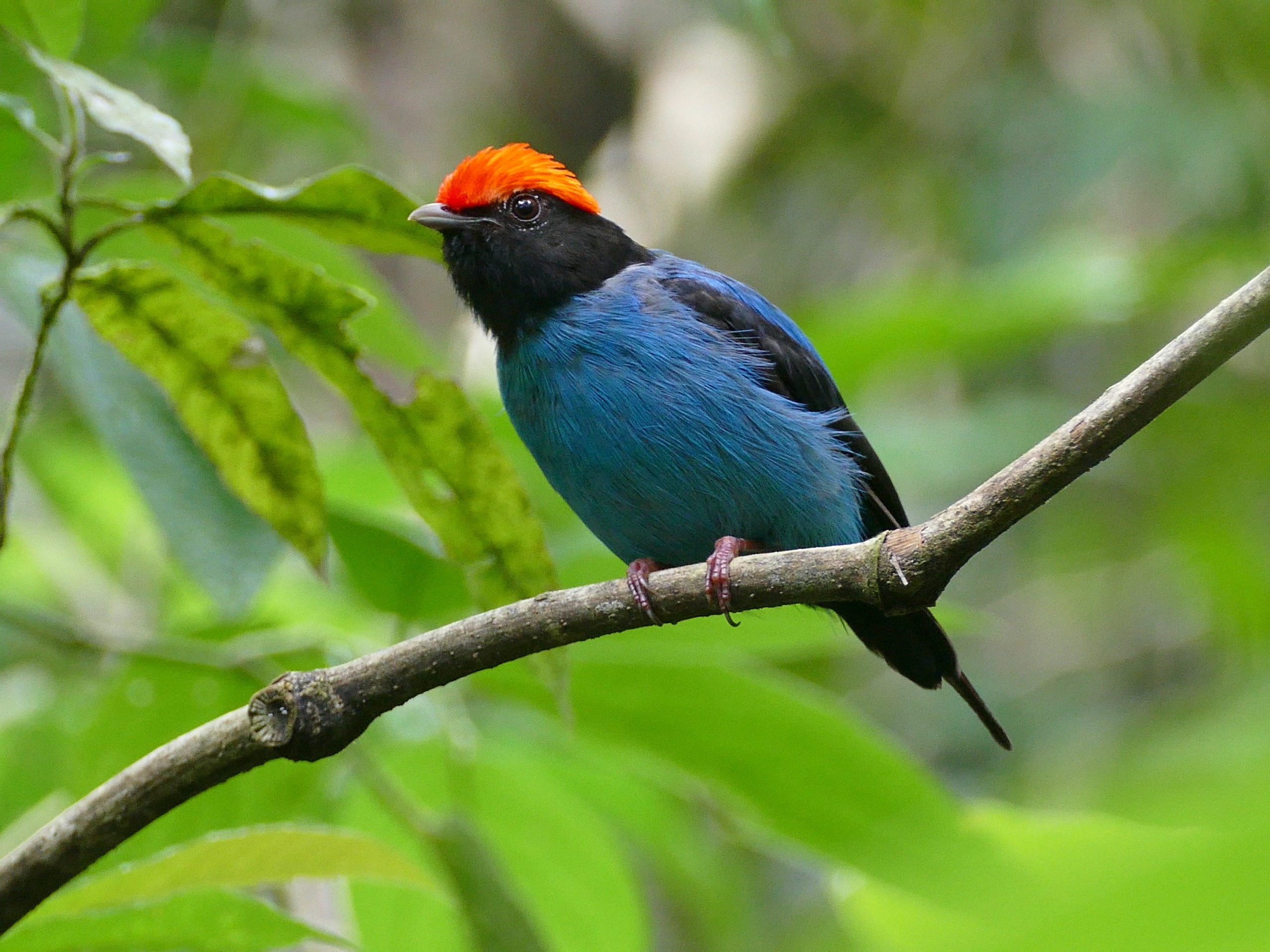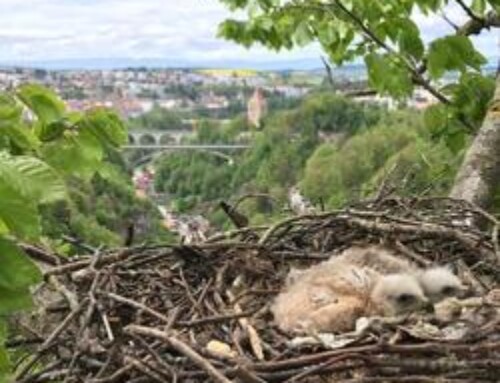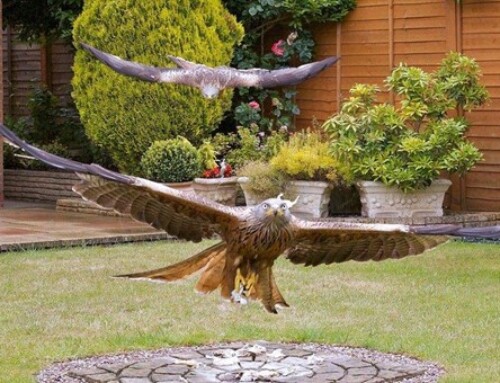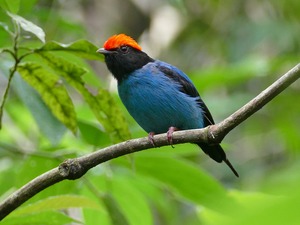 LINKED PAPER
LINKED PAPER
Mixed evidence for nest masquerading in the Blue Manakin (Chiroxiphia caudata). Zima, P.V.Q., Perrella, D.F. & Francisco, M.R. 2022 Ibis. doi: 10.1111/ibi.13110 VIEW
A high percentage of bird’s nests are depredated, independently of the species and habitat. For this reason, nests of many bird species are expected to be camouflaged as a way to avoid predation (Hansell 1996, Mulder et al. 2021). While background matching has been proved to be an important camouflage strategy for eggs and incubating individuals of ground-nesting birds (Stevens et al. 2017, Gómez et al. 2018), the camouflage function of nests per se has been surprisingly poorly exploited (Hansell 1996, Mulder et al. 2021). Because nest camouflage involves only the interactions between nests and visually-oriented predators, discriminating between visually and olfactive-oriented predators is required in experiments addressing the nest camouflage hypothesis, which is not straightforward (Stevens et al. 2017, Gómez et al. 2018).
Video 1 Long-tailed Manakin (Chiroxiphia linearis).
Nests of the Atlantic Forest endemic Blue Manakin (Chiroxiphia caudata) present a ‘’tail’’ of loose material hung from the bottom, and at a distance they resemble the pendant tufts of moss or debris deposits commonly found throughout tree branches (Fig. 1). Differently from background matching, the camouflage strategy by which animals (or here, nests) show visual similarities to inedible objects or structures present in the nearby environment, making them unlikely to be identified even if detected by visually-oriented predators, is known as ‘’masquerading’’ (Skelhorn et al. 2010, 2011, Nafus et al. 2015).
In this recent work, a team of ornithologists working in one of the best preserved Brazilian Atlantic Forest areas tested the hypothesis of nest-masquerading in the Blue Manakin. Camera traps were installed near the nests to identify nest predators and they predicted that the idea of nest-masquerading would be supported if: (i) nest-like structures are not homogeneously distributed in the habitat, (ii) birds select nest-sites with higher densities of nest-like structures, (iii) nest predators are mostly visually-oriented, and (iv) densities of nest-like structures around nests are correlated with nest survival.
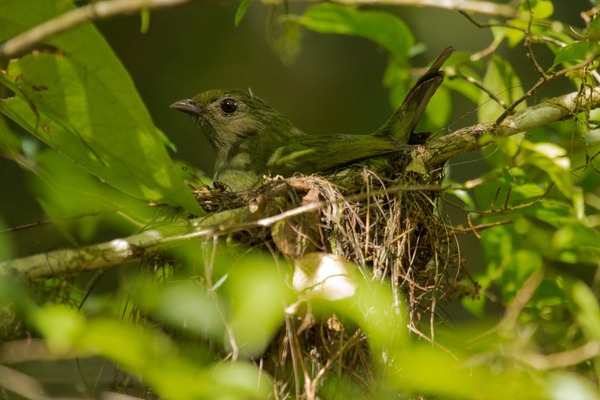
Figure 1 Nest and incubating female Blue Manakin (Chiroxiphia caudata) © D.F. Perrella.
Modelling analyses revealed that female Blue Manakins strongly selected nest-sites with increased densities of nest-like structures in a 3 m radius, and camera-trap videos revealed that the main nest predators were visually-oriented, with the Green-billed Toucan (Ramphastos dicolorus) being the most important predator. However, unexpectedly, the probability of nest predation was higher in the territories containing more nest-like structures, meaning that the predictions of nest-masquerading were only partially supported. But what could explain these contradictory results?
One of the potential explanations proposed by the authors is that toucans, and other visually-oriented predators, could have learned how to use the agglomerates of pendent mosses and debris as cues to find the Blue Manakin nests, indicating predators counteradaptations, which has been observed in other predator-prey systems. Despite this mixed evidence for nest-masquerading, nest camouflage is still an open field for new investigations and further experiments with other species and habitats must be performed.
References
Gómez, J., Ramo, C., Troscianko, J., Stevens, M., Castro, M., Pérez-Hurtado, A., Liñán-Cembrano, G. & Amat, J.A. 2018. Individual egg camouflage is influenced by microhabitat selection and use of nest materials in ground-nesting birds. Behavioral Ecology and Sociobiology 72: 142. VIEW
Hansell, M.H. 1996. The function of lichen flakes and white spider cocoons on the outer surface of birds’ nests. Journal of Natural History 30: 303-311 VIEW
Mulder, T., Campbell, C.J. & Ruxton, G.D. 2021. Evaluation of disruptive camouflage of avian cup-nests. Ibis 163: 150-158 VIEW
Nafus, M.G., Germano, J.M., Perry, J.A., Todd, B.D., Walsh, A. & Swaisgood, R.R. 2015. Hiding in plain sight: a study on camouflage and habitat selection in a slow-moving desert herbivore. Behavioral Ecology 26: 1389-1394 VIEW
Skelhorn, J., Rowland, H.M. & Ruxton, G.D. 2010. The evolution and ecology of masquerade. Biological Journal of the Linnean Society 99: 1-8 VIEW
Stevens, M., Troscianko. J., Wilson-Aggarwal, J.K. & Spottiswoode, C.N. 2017. Improvement of individual camouflage through background choice in ground-nesting birds. Nature Ecology and Evolution 1: 1325-1333 VIEW
Image credit
Top right: “Chiroxiphia caudata” Swallow-tailed Manakin, Manakin à longue queue, Blaubrustpipra © Egon Fink CC BY 2.0 Flickr.
If you want to write about your research in #theBOUblog, then please see here.


